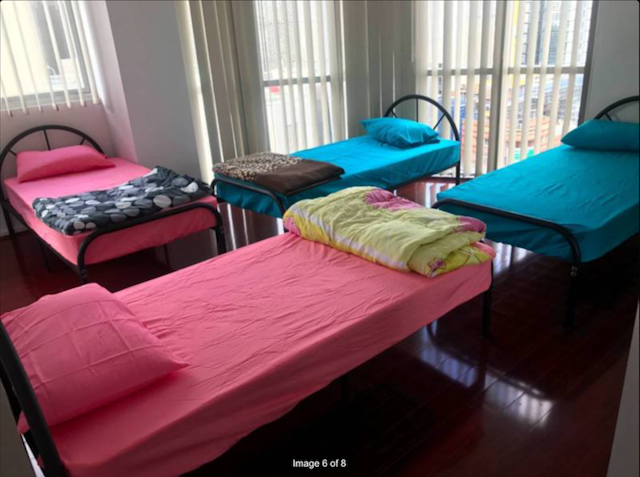High rents and short-term rentals are driving people to organise themselves to share rooms with strangers in order to live in the city. Room sharing outside a family environment is also occurring in some professions. This includes airline stewards and submariners, nurses on shifts, or hospitality workers in remote or seasonal locations, to name a few.
There are precedents where this arrangement is not unusual. Youth and backpacker hostels offer room sharing as a budget option.
In the cases of the workers above, however, the roomies are part of an organisation and are colleagues. This ensures some vetting has taken place and that their conduct is expected to be in keeping with their paid position and contract.
Youth hostels have management to handle complaints and to keep an eye on things. But what about when you are sharing a room and found your roomie through a website? Who is in charge? And how do you really know with whom you are sharing?
City living costs are driving people to organise themselves to share a room with strangers so they can live in their required location. It’s harder than ever to afford your own bedroom to sleep in.
Further reading: Crowded housing market gives youth little chance for independence
Various websites list hundreds of offers to share rooms in central Sydney. Beds are available from about $150 to over $230 a week. Room sharing also happens in suburbs like Double Bay, Mosman and Marrickville.
A recent article, “How short-term rentals are making Sydney’s housing crisis worse”, calculates that about 6,000 properties are removed from the rental market and offered to higher-paying tourists through “sharing economy” sites like Airbnb. We have an indication what the potential tenants who can’t afford to rent a flat anymore are doing – they are room sharing. I estimate thousands of people are room sharing right now in the inner city.
Further reading: How Airbnb is reshaping our cities
Exceeding capacity causes many problems
Overcrowded apartments, beyond interfering with the amenity of strata owners, have a number of other implications. One is that these packed living arrangements raise basic health concerns. Historically, 19th-century New York tenements come to mind. How are facilities like bathrooms and toilets – the health hardware – going to hold up when used by multiples of the occupants they were originally designed for?
In Australia today, we know relatively little about the extent of chronically overcrowded housing. But research has looked at its impact on those Indigenous householders for whom it’s a fact of daily life. In some cases, up to five people share one bedroom and up to 30 people use the services of one house.
It’s not because they like it, but because there are not enough houses that perform well. Product selection is not fit for purpose and goes hand in hand with a lack of maintenance. Award-winning research shows this makes it virtually impossible for these householders to carry out basic healthy living practices.
Appliances, fittings and fixtures are engineered to cater to household, commercial, industrial or military performance demands. Fit-out quality selection has direct implications on product life and therefore performance. If these products fail because they are not suitable, this has impacts on health and wellbeing.
The research shows that this is not the fault of the residents, Indigenous or otherwise. Now these well-documented issues are being reproduced in dense urban settings.
Who is going to repair the cheap and non-compliant fixtures when they fail? The poor occupants? What kind of replacements can be expected? High-quality commercial fittings to suit the 500% higher use, or cheap replacements that will predictably fail again in due time?
Can a shared room be home?
Lack of personal space and privacy are other problems. The images on the websites clearly demonstrate practical day-to-day concerns. Where do you store your things? There is no existing furniture product category that meets the requirements of sharing with strangers.
A seasonal worker in the Snowy Mountains told me the workers left damp clothing lying on the floor between their bunks. But even if you can hang your things up somewhere, how do you ensure they are still there when you come home? Internal doors generally don’t have key locks and nor do cupboards. Tenants can’t even hang a picture, so how can they secure their space?
Ikea offers furnishings for small flats and some of their products are thoughtfully designed to make small spaces more effective. But they don’t have products for these room-share settings. Renting means you are not allowed to drill holes to install shelves or even hooks.
It appears that the precarious life of the roomie, who lacks a sense of security, stability, privacy, safety and the ability to control their living space, meets the Australian Bureau of Statistics (ABS) definition of homelessness. A bed alone does not make a home.

Further reading: Ghost-hunting: will the census reveal the true scale of homelessness in Australia?
This article has been updated to correct the spelling of Mosman.

